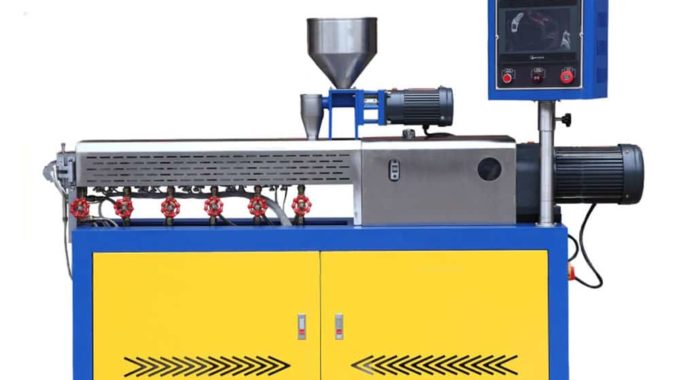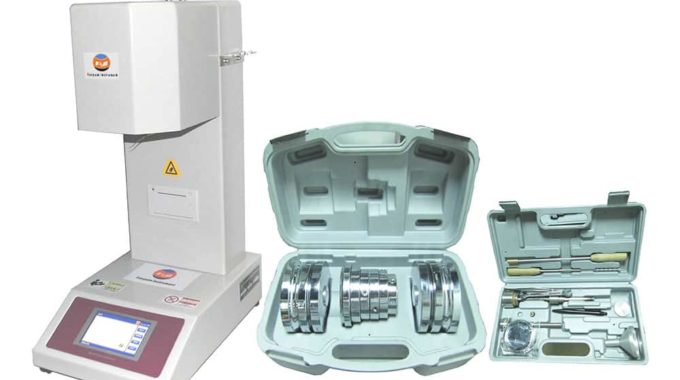How to Use Notched Constant Tensile Load Tester
Now more and more customer want to check their Polyolefin Geomembranes. Today we give introduce about ASTM D5397 method by notched constant tensile load tester.
Contents
Scope
1.1 This test method is used to develop test data from which the susceptibility of polyolefin geomembrane sheet material to stress cracking under a constant tensile load condition and an accelerated environmental condition can be evaluated.
1.2 This test method measures the failure time associated with a given test specimen at a specified tensile load level. Results from a series of such tests utilizing a range of load levels can be used to construct a stress-time plot on a log-log axis.
1.3 The values stated in SI units are to be regarded as the standard. The inch-pound units given in parentheses are provided for information only.
1.4 This standard does not purport to address all of the safety concerns, if any, associated with its use. It is the responsibility of the user of this standard to establish appropriate safety and health practices and determine the applicability of regulatory limitations prior to use.
Summary of the Test
This test method consists of subjecting a dumbbell shaped notched test specimen from a polyolefin sheet to a constant tensile load in the presence of a surface-active agent and at an elevated temperature. The timing of each working position individually, every three position as a group to do parallel test ,each group load different yield stress; it has the automatic temperature controlling and lifting water bath ;there are 30 working positions which support 10 groups tests under 20%-65% yield stress ,each group calculates load quality automatically; providing timing determination method and breakage time determination method in two ways; during or after test you can check out the rupture time of each specimen under all the stress and the average rupture time so it is easy to analyze the results.
Sample
The “NCTL” test method test the specimen with putting the specimen under the different constant tensile load, load 20%-65% of the material yield strength on the dumbbell shaped specimen. The sample should be notched before test ,the depth is the 20% of the sample thickness , then immersed it in a temperature of 50 ℃, 10% concentration surfactant . In this accelerated aging process, measure the time of sample destruction, the results plotted as a load and destruction time diagram .NCTL provide the information of material plastic failure and brittle failure .The material resistance to stress cracking strength is the transition time of two failure modes.
Specimen preparation and installation
- sample with the equipped cutter along certain direction.
- into 20% specimen thickness with the notch equipment at the middle of the specimen along the vertical width direction.
- h the mounting holes with the punching equipment at both ends of the specimen.
- all and fix the protective case on the mounting holes.
- Install the specimen on the specimen hook. (Install the lower hook first).
Test report
5.1 Complete identification of the material tested
5.2 Report the average failure time and coefficient of variation values
If there any things that I have missed to know about Notched Constant Tensile Load Tester. Or if you know more detailed .you can send email to [email protected]
Of course you can leave message here to use .
Some questions
Some customer has some questions about Environmental Stress Cracking Resistance. You can check belows:
Question : Why is the sample suspended in the air rather than immersed in the solution pool? (if this is just to show how the samples will be immersed in the solution pool)
Answer :The pictures are only for display, and all the sample frames are fixed to a metal frame; There is a pool below the metal frame; The solution pool is controlled by the motor and can rise and fall. When clicked on the screen, the solution pool rises, and the metal frame and all samples are immersed in the solution.
Questions : Why are there two drawers under the tester?
Answer : It’s not a drawer; It’s two stops; Each baffle is fixed with four screws, and after removing four screws, it is easy to remove the baffle by holding the two slots.
Question :How did the timer on the instrument detect the fracture of the sample?
Answer :ach sample frame has a lever connected to the rear load; There is a limit switch below the end of the lever; When the sample is broken, the end of the lever is lowered due to the load, and the limit switch is triggered and the device stops timing. Each sample is timed separately, and a limit switch is placed at the bottom of each lever to control the breaking time of each sample.
Question : How does the test suspension weight of each sample load on the hanging arm of each sample?
Answer : The suspension arm is connected to the lever and the rear end of the lever is loaded with weight;
Question : Why is there a metal ring on the hook hole in each sample? Is this included in the test instrument? What are the dimensions of these metal rings? We’ve been using screws instead of metal holes and hooks.
Answer : The metal ring and the hook are only to be able to hook the sample, and the standard is also required to open holes on the sample. The instrument standard includes metal ring, and metal ring can be matched with the hook. The metal ring is the specific size. If you buy the instrument, you will know it by yourself.
Question : Could you please give us the mechanical schematic diagram of a detailed NCTL tester?
Answer : There is a mechanical schematic diagram in ASTM D5397. The mechanical schematic diagram of our company is mainly designed according to ASTM D5397.
Question : How accurate is the temperature in the test?
Answer : + / – 1 ℃
Questions : . How does the solution pool mix well in the test?
Answer : circulating pump to stir.
Question : How does this tester meet the ASTM requirements?
Answer : The instrument is strictly according to the ASTM D5397 standard.
Question: How to increase the solution to the solution pool and how to empty the solution pool?
Answer : The solution should be prepared before the test, and then directly into the solution pool above the solution pool.The solution pool has a drain; Open the drain and the solution pool can be emptied
We also share you about method of ASTM D5397-99 Evaluation of Stress Crack Resistance of Polyolefin Geomembranes Using Notched Constant Tensile. You can check attached.
If you have any good idea about notched constant tensile load tester. You can send email to [email protected]
Leave a Reply
You must be logged in to post a comment.



I really like and appreciate your blog article.Really thank you! Very good !
Many thanks .If you need more information .you can contact with us [email protected] or [email protected]
Hello Dear
I’m interest about this equipment, please send me a quote for my email as son as posible
Thank you for your time
Sincerely
José Ccalluco
Móble Phone: +51977659110
Hi
FYI having vast experience of test equipment and having very cooperative staff to expand the bussiness worldwide
We pray for there batter bussiness and become a shining star
Very good article , I Like it . thks